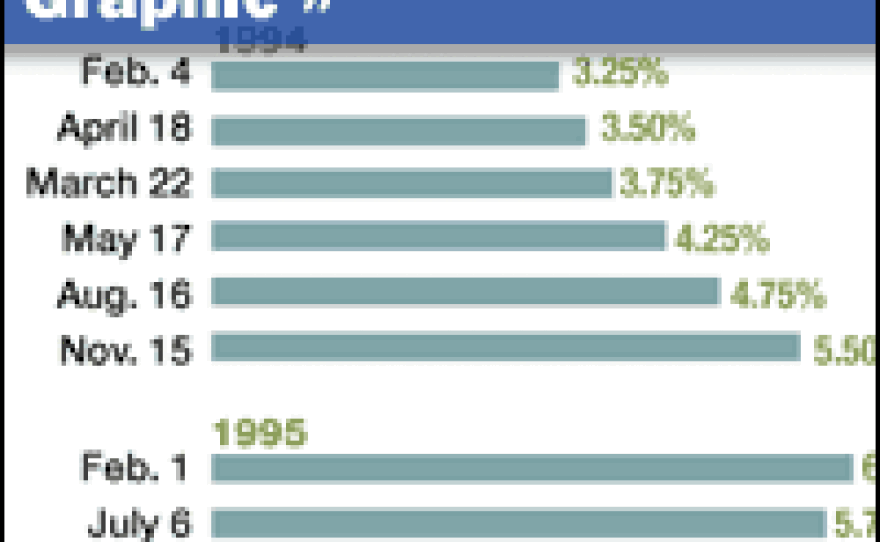The Federal Reserve cut a key interest rate by another quarter percentage point on Wednesday. It's the fourth such cut this year and the seventh since September, when the Fed began reducing the federal funds rate in response to the credit, housing and financial downturn in the economy.
The Fed's action brought the federal funds rate to 2 percent, its lowest level since late 2004. Wednesday's move was less aggressive than the easing the Fed undertook earlier this year. Between January and March, the federal funds rate dropped from 4.25 percent to 2.25 percent — the most aggressive Fed intervention in the past 25 years.
The federal funds rate determines what banks charge each other on overnight loans and also affects a wide range of interest rates charged to people and businesses.
The Fed's latest reduction was in line with expectations. Wall Street believes this could well wrap up the Fed's rate cuts — unless the economy threatens to fall into a worse slump than currently expected.
The Fed said it stood ready to "act as needed to promote sustainable economic growth and stability." That phrase was seen as a signal that the Fed is as worried about weak growth as it is about the risk of higher inflation. The Fed devoted portions of its statement to both the threats of weakness and the threats that inflation could pose, likely reflecting the debate inside the central bank.
A look at some factors that may affect the Fed's rate-cut policy going forward:
Economic Impacts. It takes some time for the full effect of cuts to be felt by the economy. David Wessel, economics editor for The Wall Street Journal, says the Fed believes that the credit, mortgage and high-yield corporate debt markets are functioning "more smoothly now." That may be an indicator that the Fed may soon pause its rate-cutting activities.
Food and Gas. Rising prices for basic commodities — food and energy — have caused significant anxiety for consumers, and it's also of concern to the Fed as it ponders what future steps to take. A weak labor market, rising unemployment and wages that aren't rising very much are a bad combination. The threat to living standards is especially serious for people here and abroad who are "living from hand to mouth," Wessel says.
Concerns over Growth and Inflation. In past Fed statements, Chairman Ben Bernanke has suggested that he's more concerned about stagnant growth than inflation. Newsweek columnist Robert Samuelson worries that Bernanke may be making the wrong bet.
The Fed's policy of cutting interest rates to "pump up the economy" is a "popular" strategy, Samuelson says. Wall Street, politicians and consumers certainly like it.
But he warns that it can lead to a dangerous boom and bust cycle, akin to what happened in the '70s: The Fed eased interest rates to stimulate the economy, but this spurred inflation. The Fed responded by raising rates, which, in turn, ground the economy to a halt and led to a new round of rate cuts — and more inflation.
"It may turn out, in the end, that [Bernanke] is quite right, and that inflation will, in fact, subside spontaneously, because the economy is growing slower this year, and the pressures on prices and wages will abate," Samuelson says. "But the sort of rationale that he gives is very reminiscent of what happened in the 1970s."
In Wednesday's statement, the Fed said it expects inflation to remain moderate in coming months, but it noted that "uncertainty about the inflation outlook remains high."
Upside to Economic Downturns. Recessions take a toll on people by eliminating jobs and reducing income and profits. But Samuelson says the upside to such economic downturns is that they can help "prevent worse eventualities." In other words, a mild recession is better than a severe one.
Material from The Associated Press was used in this report.
Copyright 2022 NPR. To see more, visit https://www.npr.org. 9(MDAzMjM2NDYzMDEyMzc1Njk5NjAxNzY3OQ001))






